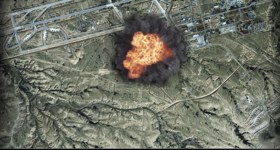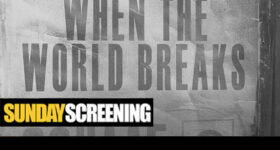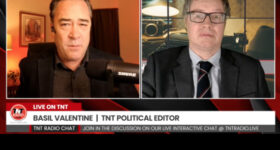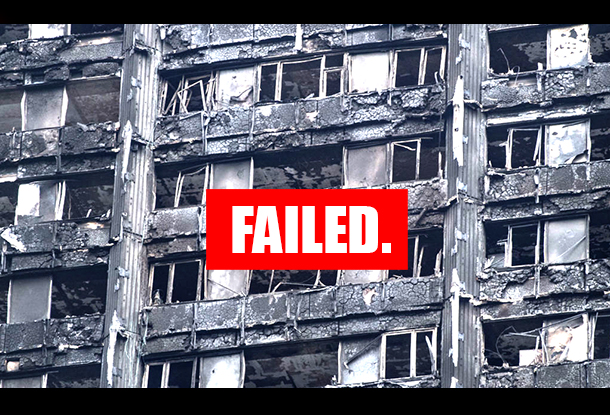 David Scott
David Scott
UK Column
Why did the fire regulations desert the residents of Grenfell Tower?
Politicians talk of the horrors of deregulation, and look to use this spectre to pin the blame for Grenfell on their opponents. This is understandable, for it is in their interests to have more regulation and more control over society; all for the greater good of course. But they are wrong. The story here is much bigger; it is an example of our ordered and regulated world running aground. It was not deregulation, but regulation itself, which led us here.
This is true on several levels; the endless drive for thermal efficiency in response to politically-motivated global-warming alarmism is one issue. A warped sense of risk, where common-sense judgement is replaced by over-conservatism and loss of perspective, is a second. The monotonous languor that affected officials, when alerted by residents that fire risks were going unaddressed, is most certainly a third. It all points to an ebbing of skill in handling the uncertainties of life.
It is in the application of the fire regulations to Grenfell Tower that we find the simplest and most stark example; one that illustrates the limitations of regulation itself. For the rules that govern our lives are shown here to fail to provide the security we desire, but which only constant thought, alertness and sagacity can hope to approach.
Fire regulations are complex and seek to cope with virtually every building type and configuration. The regulations offer several alternative routes to demonstrate that the basic objectives are met. These objectives are firstly the preservation of human life and, very much secondly, property protection. It must be emphasised that fire in a building is extremely deadly, mostly due to smoke and asphyxiation. Fires are unpredictable and tend to find the smallest defect in defences. Having carried out several structural assessments of fire damaged buildings, I can personally attest to their destructive power.
Options to show that a design complies with the regulation can include reference to a standard set of rules in a volume called Approved Document B. It can also be in the form standardised testing, studies of previous testing, or advanced computer modelling of such elements as the movements of people and the build-up of smoke. In the case of Grenfell Tower, the insulation material, a combustible foam called PIR or Polyisocyanurate, was justified by means of a fire test on a sample panel. However, the outer cladding in that test was different from the construction at Grenfell. The cladding was justified by reference to the prescriptive rules of Approved Document B – the building regulations.
Here is what they require:
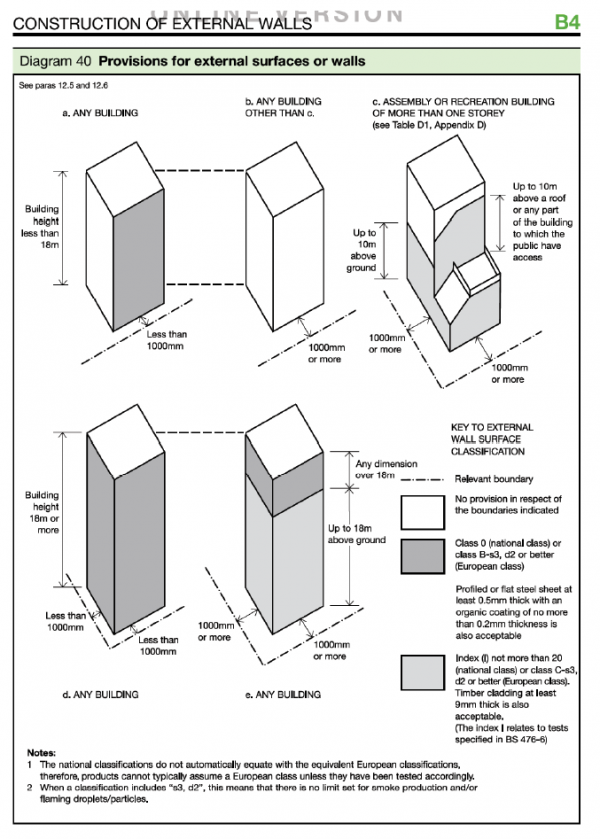
So for tall buildings away from boundaries, the requirement is for a Class 0 surface. This means that British Standard fire testing methods, as interpreted in the regulations, define compliance. There are several criteria rather than a single test, but, at the heart of the process lies the spread of flame test, the result of which must be in the highest category, Class 1. The test is best understood by watching one conducted:
.
For Class 1, the total length of the sample the flame spreads along in ten minutes must not exceed 165mm. It should be noted that the pilot flame is small, is applied for one minute only and is applied to the exposed flat surface of the product under test.
Results from this testing was included in the certificate for this cladding issued by the British Board of Agrement:

Clearly the basic material, Reynobond PE, and the fire resistant alternative, Reynobond FR, both satisfied the requirement for class 1 surface spread of flame, and hence could achieve the necessary class 0 surface rating. Requirements for limited combustibility are present in Approved Document B for insulation products, but not for claddings without an insulation layer. Hence, although a grade of Aluminium Composite Material (ACM) cladding with mineral core is available that satisfies “limited combustibility” requirements, it was not used. It was not used because a cladding is not an insulation layer, and so the clause did not apply.
It appears this same surface spread of flame test is now yielding Class 3 results in which the flame spreads 710mm in ten minutes, rather than Class 1 (165mm). How could this be?
Simply, either the product sample, or the test apparatus, or the testing procedures have been modified in light of the tragedy at Grenfell to expose the flammable PE core of the ACM to the pilot flame. This is not in accordance with the regulations which state that the surface, not the edge, of a composite product must have a Class 1 spread of flame. Nor is it compliance with the normal application of the testing standard. The tests are being changed in light of the events that they failed to predict…
Continue this article at UK Column.org
READ MORE GRENFELL NEWS AT: 21st Century Wire Grenfell Files
SUPPORT OUR WORK BY SUBSCRIBING & BECOMING A MEMBER @21WIRE.TV







